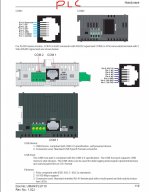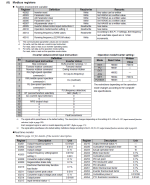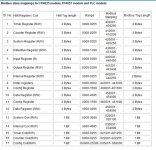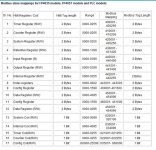Hello all,
Inverter/VFD : MITSUBISHI FR-D740-036-EC (3 phase,400V)
PLC: RENU FL0050808402U
I am trying to connect the RENU plc with the inverter using RS 485.
In the PLC there are two ports in which only the 4-pin terminal (COM 2) supports the RS 485, and COM 1 ( RJ-45) only supports RS -232, so COM 2 is the only way to communicate with the inverter since the inverter didn't support RS 232.
The port on the inverter is RJ-45 which supports RS-485.
Please provide any pinout for making a cable with one end RJ-45 and the other end for 4 pin RS 485.
I am confused because pinouts vary with different websites.
I have attached the snippets of the inverter and plc. Please have a look.
cheers


Inverter/VFD : MITSUBISHI FR-D740-036-EC (3 phase,400V)
PLC: RENU FL0050808402U
I am trying to connect the RENU plc with the inverter using RS 485.
In the PLC there are two ports in which only the 4-pin terminal (COM 2) supports the RS 485, and COM 1 ( RJ-45) only supports RS -232, so COM 2 is the only way to communicate with the inverter since the inverter didn't support RS 232.
The port on the inverter is RJ-45 which supports RS-485.
Please provide any pinout for making a cable with one end RJ-45 and the other end for 4 pin RS 485.
I am confused because pinouts vary with different websites.
I have attached the snippets of the inverter and plc. Please have a look.
cheers








